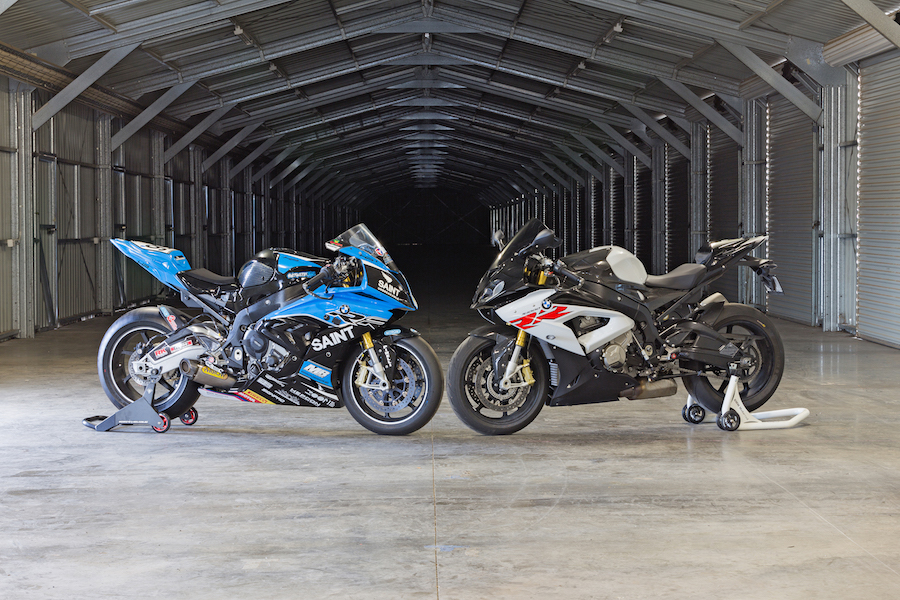There’s no denying we are living in a fruitful time of developing technology. Every year something new is discovered, materials are improved and, thankfully for the sports riders among us, our weapons of choice are becoming safer, yet at the same time getting faster and closer to the superbikes we watch racing around the world.
My superbike racing background saw me run in various championships on many different machines, so I often end up chatting with people about the experiences. A common question they ask is, what’s the difference? How much faster is a superbike than the road equivalent? It’s a valid question and one that I’ve felt confident answering but had never put to a proper test.
An experiment was needed and hey, why not a little fun at the same time? We’d have to round up some pretty special and hard-to-come-by machinery, but it would be worth the effort.
Since its launch in Australia in 2010, the BMW S1000RR has been one of the fastest, most technologically advanced superbikes on the market. It has held its place right near the top of the heap with its technology and electronic wizardry, both as a roadbike and a racebike. The 2017 production model is a sharp-edged tool that doesn’t suffer in any area and is a marked improvement over the first street RRs, such has been the rate of development over the past decade. The BMW is probably the closest bike I’ve ridden to a full racing machine.
So it seemed perfect for this test. With the help of Next Gen Motorsports and BMW Australia I came up with a plan – a simple but effective way of finding out the truth. We needed a racetrack, a streetbike, a superbike and some slicks. Then we needed a gun – no, not me, I fire blanks these days – a real gun like 2016 Australian Supersport champ Troy Guenther.
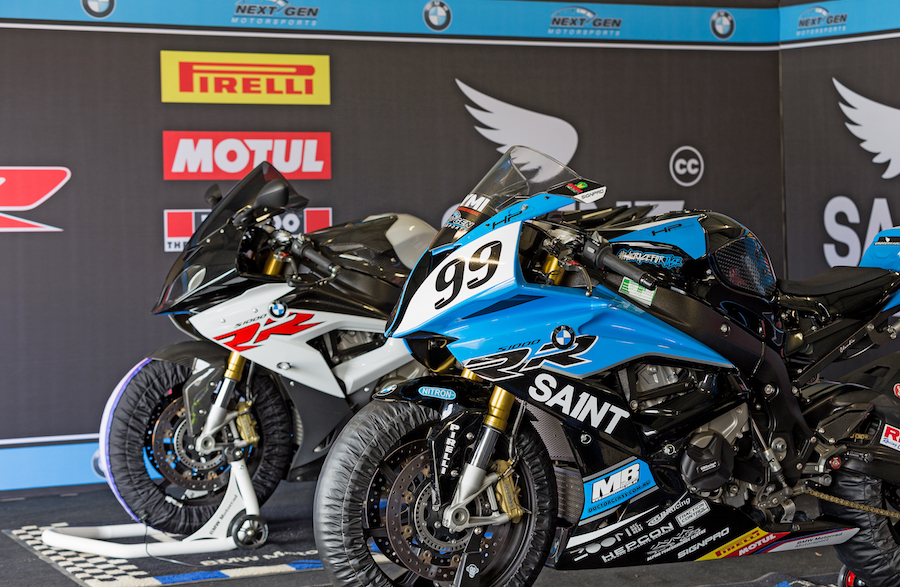
After a couple of months organising the event it was fantastic to roll up at Winton Raceway in north-east Victoria to find Wayne Hepburn’s Next Gen team in the garage in all its glory. Troy’s 2017 Superbike was on the right and the roadbike on the left, but the big surprise for me was a gleaming Next Gen S1000RR in the middle with my name on the screen and my number pasted on the front. I knew at that point the day was going to be a good one.
The idea was for Troy to ride the standard bike and set a time with the OEM tyres before then heading out on his Australian Superbike-spec machine to see what it would do. Rounding out the test, we would then fit the racing slicks to the standard RR and check the time difference on all three configurations.
Bike 1: Stock S1000RR, OEM tyres
We couldn’t have asked for better conditions with the weather forecast being cool but sunny. Round three of the Australian Superbike Championship had been staged at Winton earlier in the year, and Troy had scored his best results of the season, so he was absolutely on the pace from the first lap, making him the perfect rider to get some good stable times across the day. The three set-ups we were going to test needed that, and at the end of the day the differences we were hoping to see would be validated by his consistency.
I was also going to back-to-back the bikes, not so much from a lap time perspective but more from a feeling point of view.
The track opened at 9am sharp and I didn’t waste any time getting onto the track. I shot out first on the standard RR. It’s such a good bike straight out of the box, something I knew from the recent AMCN AUSTest shootout where the BMW took top honours. I’ve also competed on them in the past, but most of the time I’ve ridden them on sticky tyres. This one had the OEM rubber – Metzeler Racetecs.

The first thing that strikes you is how easy this bike is to ride. The power is so smooth, and yet you open the throttle and it just shoots off the turns like a bullet. The standard electronic package does a great job of controlling wheelspin off the corners and its electronic engine braking system keeps the bike in line at the many hard braking areas into Winton’s tight bends.
A big surprise for me was the way the standard suspension performed. The RR features BMW’s latest DDC (Dynamic Damping Control) electronic suspension, a semi-adaptive system that uses the bike’s position and the rider’s control inputs to alter damping on the go.
Brake hard and it stiffens the front, lean over and it softens the suspension for more edge grip, and with every input there is a change giving you a more comfortable and yet better steering and handling bike. The DDC works well on the racetrack without any fiddling and I believe all bikes will have similar systems fitted as standard equipment in the future.
The standard braking package is also top notch, with good feel and plenty of stopping power available from the Brembo monobloc calipers. Even better was the bi-directional quickshifter, which gives you that racebike feeling of shifting through the gears in both directions without the clutch.
I did about 10 laps on the roadbike in my first stint, and the only fault I could pick was that the street-biased tyres were starting to move around as they overheated. That’s no surprise as they’re designed as an all-rounder for the road, not as a specialist for the rigours of the track.
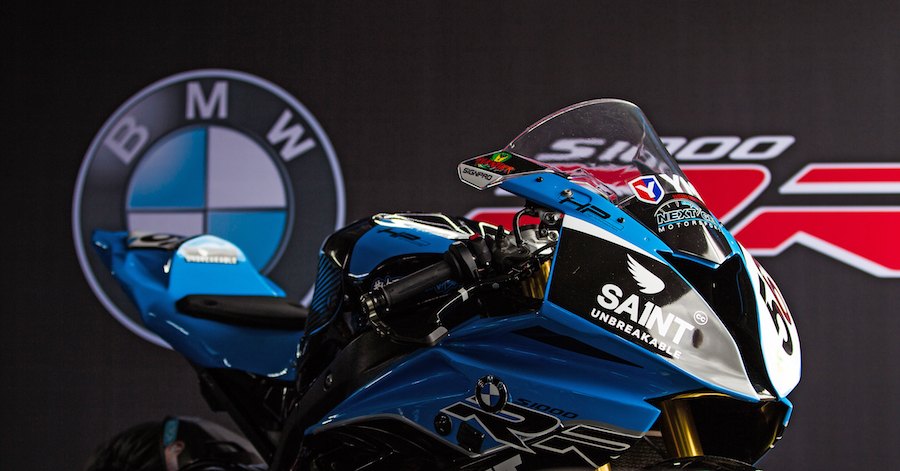
As I pulled into the pits, I found Troy waiting and chomping at the bit to sample the street machine. Even though he is skilled enough to battle with the best ASBK riders on a Next Gen S1000RR ASBK superbike, he’s only 18 years old and doesn’t have a licence yet! Not much explaining was needed because the handlebar switches for adjusting the BMW’s many electronic aids are the same as on the racebike.
Watching from the sidelines as we let the youngster loose, it looked like he was on his racebike. He was backing it in to Turn 1 and jamming his knee on the ground. He could be just as aggressive with the standard machine as he would be on his racebike, which is still fairly stock under ASBK rules anyway.
After five laps, it was easy to see that the standard tyres were crying enough. Troy was sliding more and more, so it was time to come in.
His comments revealed how far we have come since the 1970s in design. To him the stock S1000RR felt very much like the racebike in the handling department, and surprisingly powerful too. Though it still had the OEM exhaust fitted, he thought the BMW shot off the corners maybe even more easily than the race machine. I can attest to that fact as at one point I got out on track with Troy, and although he was quicker on the curvy bits, on the long start/finish straight I was able to stay with him.
But the thing Troy seemed to like most was the fact that the horn went beep – kids! Oh well, it was something that made him laugh.
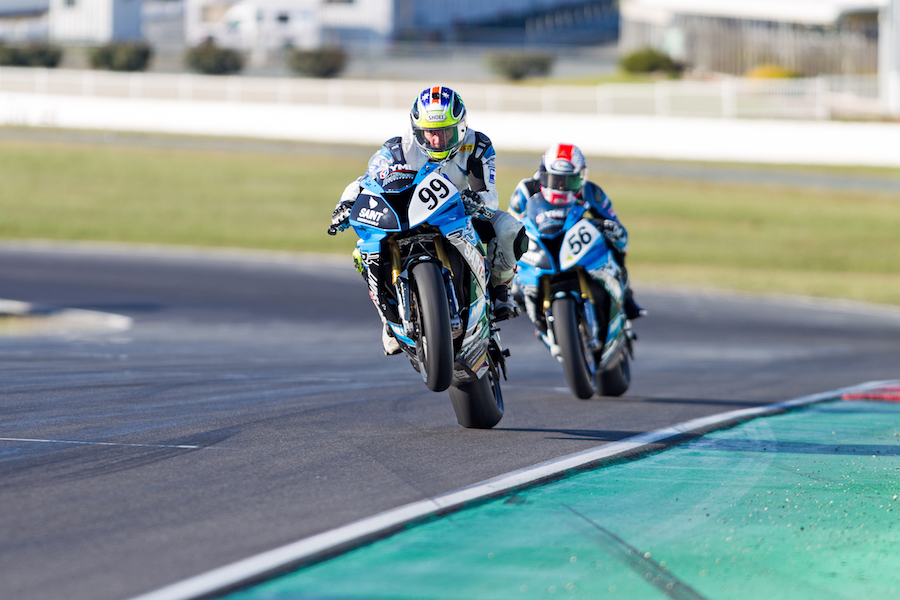
Lap time: 1m27.5s
Bike 2: Next Gen S1000RR, slicks
No sooner had Troy started heading back to the box than I ran back, pulling my leathers on as Wayne warmed up ‘my’ number 99 S1000RR Superbike, normally Troy’s spare. Being the racebike, it had a reverse shift pattern that I had to get used to, and it was set up taller to make the BMW’s already easy-handling nature even easier.
Troy’s bikes run stock engines, though some modifications are allowed. Performance gains are unlocked by a modified street ECU and racing exhaust system. The bikes have also been stripped down to the bare bones, with all the mirrors, lights and unnecessary road hardware removed to help bring the bike down as close as possible to the ASBK 168kg weight limit.
The roadbike is amazing, but with these few minor modifications plus a set of sticky racing slicks, things move to the next level very quickly. The ECU mods sharpen the throttle response and when that’s added to the lower gearing and less mass to accelerate, you have a bullet on wheels.

The racebike has specially designed Nitron race suspension that’s much harsher than the roadbike, but it’s harsh for a purpose and that is to get the bike turned and fired up the road. No thought of comfort has been put into it at all, just performance, yet uncannily, even with all the modifications, the racebike still retains and showcases the lovely DNA of the original.
I pulled in physically exhausted after my 10 laps but extremely excited as things happen a lot faster with less weight and more grip. This bike is exciting to say the least…
Earlier that morning Troy had used new slicks to cork off a 1m22.5s lap, which was a pretty impressive time for an open trackday on a cold winter morning. We know it’s indicative of a proper lap time around the Victorian circuit and it was a tenth or so faster than he’d managed to achieve at the race meeting in April. Crucially for our experiment it was also five seconds quicker than the streetbike.
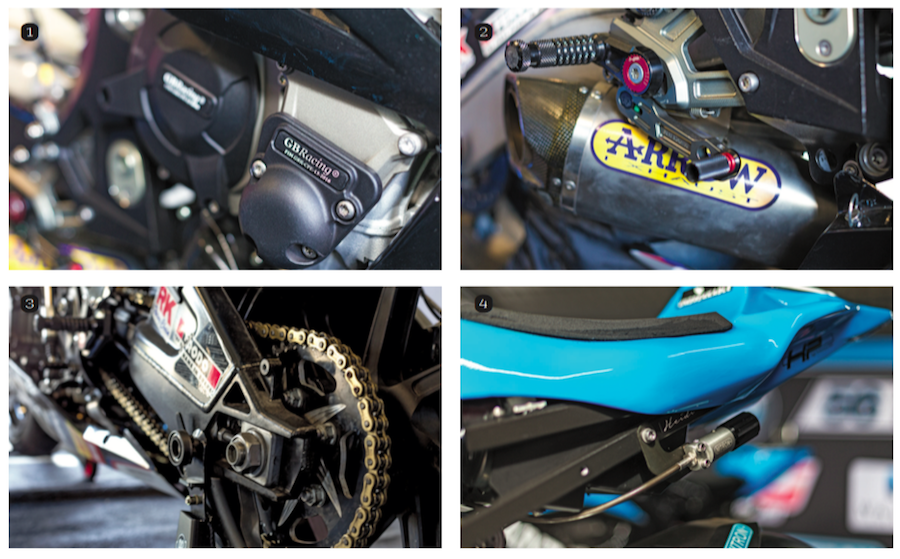
Lap Time: 1m22.5s
Bike 3: Standard S1000RR, slicks
So far the results were what I’d expected, but the real question was yet to be addressed: How much of the gap is in the tyres?
Soon we would have the answer as Wayne’s team was fitting up the standard Beemer with a set of racing rubber. Luckily we were able to use a set of Troy’s wheels with fresh Pirelli slicks and slip them straight in to the stock bike because the fitting system on the superbike is standard.
I went out first and, having just finished with the racer, I was gobsmacked. I thought I was on the wrong bike; the slicks made that much difference.
Suddenly the standard bike lost its tendency to move around, and drove off the turns instead of sliding. The sticky front compound gave me so much more confidence turning in to corners and it let the S1000RR’s chassis do its job of guiding, just like on the superbike.
I could hardly feel a weight difference at my pace either, with the production version having a great balance anyway. The ABS system coped well with the extra grip of the slicks and didn’t hinder my lap times at all.
As I’m not as sharp on track as I once was, I think I probably found it easier to ride fast than the racebike. Its slightly softer bottom end helped me feel the grip better and was easier on me.
My eyes had been opened wide at just how much difference the tyres make, and after a few laps I passed the bike over to our young maestro.
Troy only did two fliers but his lap times were impressive. Without adding preload, changing settings from standard (other than putting the ECU in slick mode) or even folding the mirrors back, Troy managed to slice two full seconds off the time he’d set on the same bike with its standard road tyres.
When he came in early we were all happy, but I had to ask why he came in so soon. He replied that he’d done what he could do and he didn’t want to scratch a new roadbike. Fair enough I say!
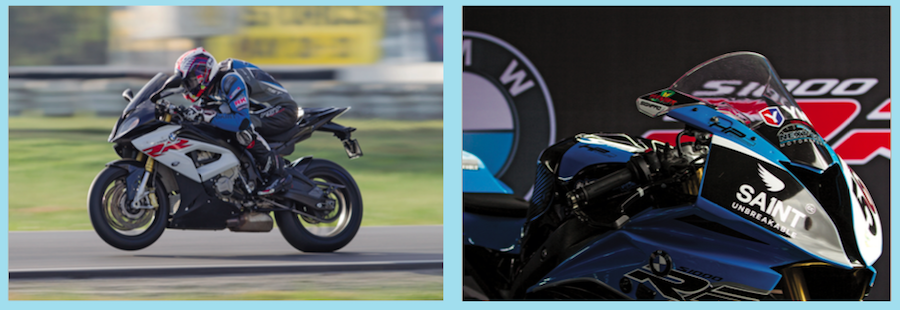
Lap time: 1m25.5s
With the results in, I think we got some pretty good data. Although the variances will be different from track to track, we can say for sure that there is never a better time to buy a superbike than now. The standard tyres work well enough on the track, but if you want that real superbike feel, buy a set of slicks – you will be blown away
by the difference.
We also proved there’s not as much of a performance gap between standard and racing bikes as one might imagine, and in the end a lot of it comes down to the pilot on board. Personally, I was amazed at the lap times done by all three configurations of machine, proving how far development has come in a short time.
Now if only I could find a used MotoGP bike… that would be a lot of fun.
Lap time
SUMMARY
Stock: 1m27.5s
Racer: 1m22.5s
Stock bike with slicks: 1m25.5s
